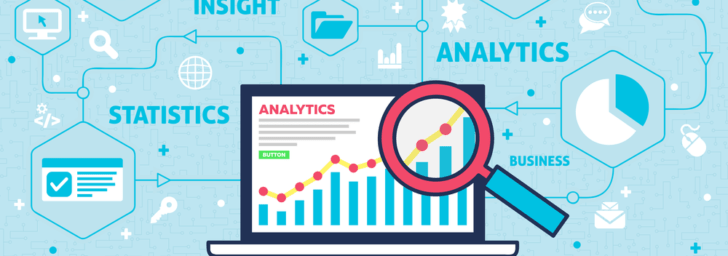30-second summary:
- BrightEdge is bringing together search and business intelligence with major new innovations.
- Marketers are looking for a robust view of their macro market and to act on micro opportunities.
- Consumer emotions are a major driver in market shifts.
- Holiday shopping insights show how people are buying specific items.
- Improving the brand’s ability to monitor, analyze, and activate data is vital to 2020 success.
As the traditional customer journey continues to be radically altered in many industry sectors of the economy, many companies struggle to align their search and digital strategies in line with macro market shifts and conditions. Recently at Share20, BrightEdge launched Market Insights to allow marketers to combine Business Intelligence (BI) with search intelligence for the first time in our industry.
According to their COO Krish Kumar,
“Marketers need platforms that leverage big data on a massive scale that can scan the entire marketing landscape but also quickly pivot to dive deep to find opportunities and understand rapidly shifting search patterns. Old models don’t always fit the new reality. Recent times have upended markets, and marketers increasingly need a robust unified platform with agility, breadth and depth, and execution speed with high precision. Our announcements show where our industry is really heading.”
BrightEdge Market Insights provides customizable macro-market trends for strategic planning and reveals prescriptive opportunities. Combined with the newly released BrightEdge Intelligent Log Analyzer, the company integrates massive data, powerful analytics, BI, and web infrastructure optimization in one platform.
This year more than ever, marketers need a robust view of their market and opportunities comprised of as much relevant, real-time consumer data as possible.
Consumer emotions a major driver in market shifts
According to Deloitte’s most recent Global Anxiety Index Survey, 50% of U.S. consumers are concerned about their health, and 61% are worried about the health of others. Thirty-eight percent are delaying large purchases, and for 26%, the ability to meet upcoming financial obligations and make payments is a real concern.
Anxiety isn’t the only emotion driving massive shifts in consumer spending behavior. BrightEdge research into search volume in the first six months of the Coronavirus pandemic shows that demand in segments including home office, garden and patio, cooking, and food delivery remains higher than in 2019. Their COVID Impact Index shows that initial spikes in search interest for pet goods, exercise goods, gaming equipment, and grocery have leveled out, although demand remains higher than pre-COVID.
Rebounding interest in verticals typically associated with discretionary spendings such as apparel, footwear, and beauty/cosmetics indicates that consumers may be returning to at least some of their pre-pandemic shopping habits.
In the early days of the pandemic, few could have imagined it would persist as long as it has, and with no end yet in sight. Having no context from previous experience in our lifetimes, it seemed impossible that life would be upturned worldwide as indeed it has been. Given the ongoing risk and the unusual longevity of the crisis, many consumers are now searching for ways to feel better—to self-care, to have the company of a pet at home, to improve their physical health, and have entertaining ways to pass more time at home.
Why marketers need to combine search and business intelligence
The Coronavirus has undoubtedly changed consumer behavior and shopping behavior in a multitude of ways. What’s more, the scale of this crisis has proven that we, as a business community, are perhaps more vulnerable to large-scale, long-lasting economic interruption than previously thought.
Consumers are reevaluating their careers, rethinking their lifestyles, and seeking meaning in their spending decisions. The way forward requires that brands simplify complex data analysis and understand key market drivers in real-time, across millions or billions of data points. And indeed, one of the most direct expressions of that intent is through search.
Real-time search data provides a much more holistic view of consumers’ interest not only in the brand itself but in the market as a whole. Broad market shifts become evident alongside localized opportunities, and comparison against competitor performance becomes possible. Search insights give brands a high-level view of the entire marketing landscape, but also the granularity to find specific localized opportunities and to understand the intent behind the trends.
Activating your search data and digital strategies for Q4 and beyond
Heading into the holiday shopping season, BrightEdge, holiday planning research, suggests that shoppers shifted purchasing behaviors online during the first few weeks of the COVID-19 pandemic and are more keenly aware of their budgets – refraining from placing big-ticket purchases online while stocking up on more essential goods or affordable luxuries. Shoppers browse more frequently, leading to more purchases and overall revenue, though they are smaller in value.
Conclusion
Improving your brand’s ability to monitor and gather and analyze and activate data is a vital part of digital marketing strategy. Organizations that implement changes based on data analytics can expect to see sales margins increase between 8 and 25%.
In 2020 it will be mission-critical for marketers to keep a finger on the pulse of changing consumer needs and behaviors. Innovations from BrightEdge are helping both customers and the community as part of their mission to inspire and deliver the best performance for their customers by becoming an integral part of the digital experience.







